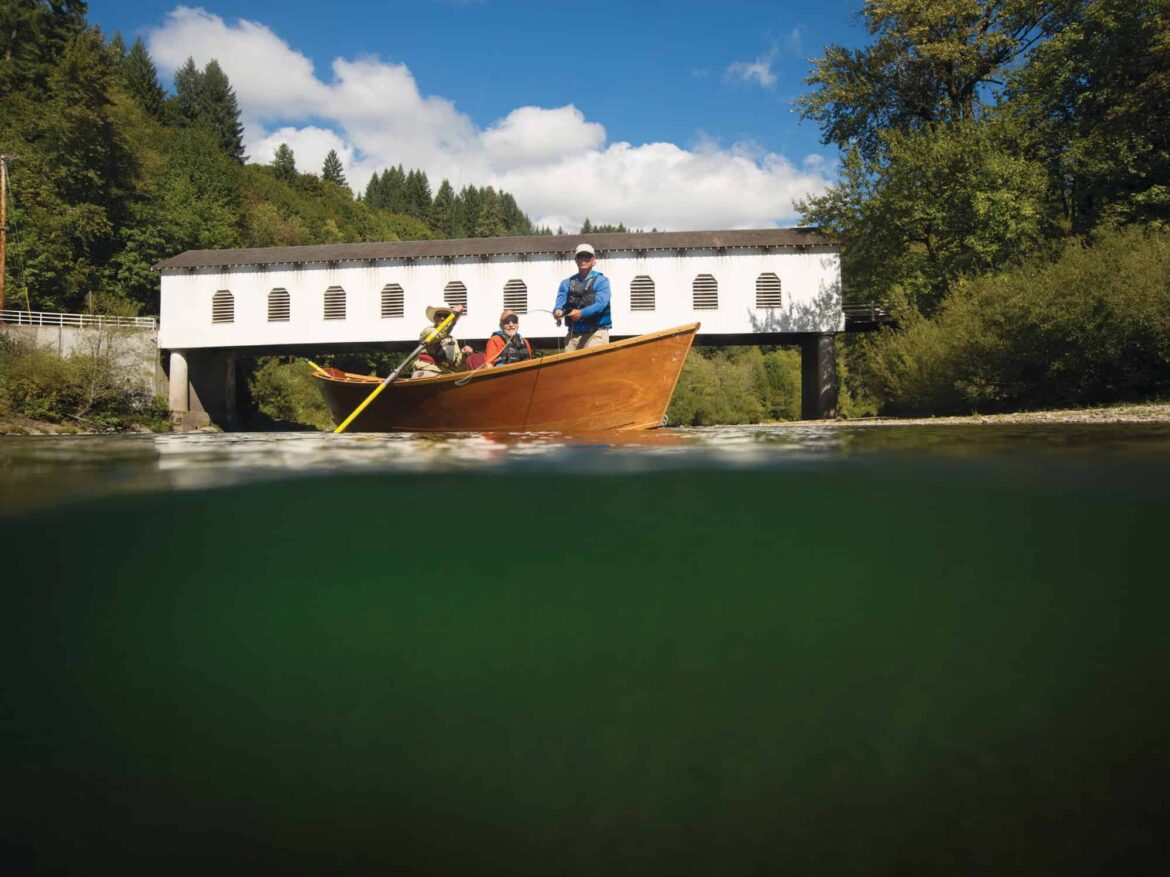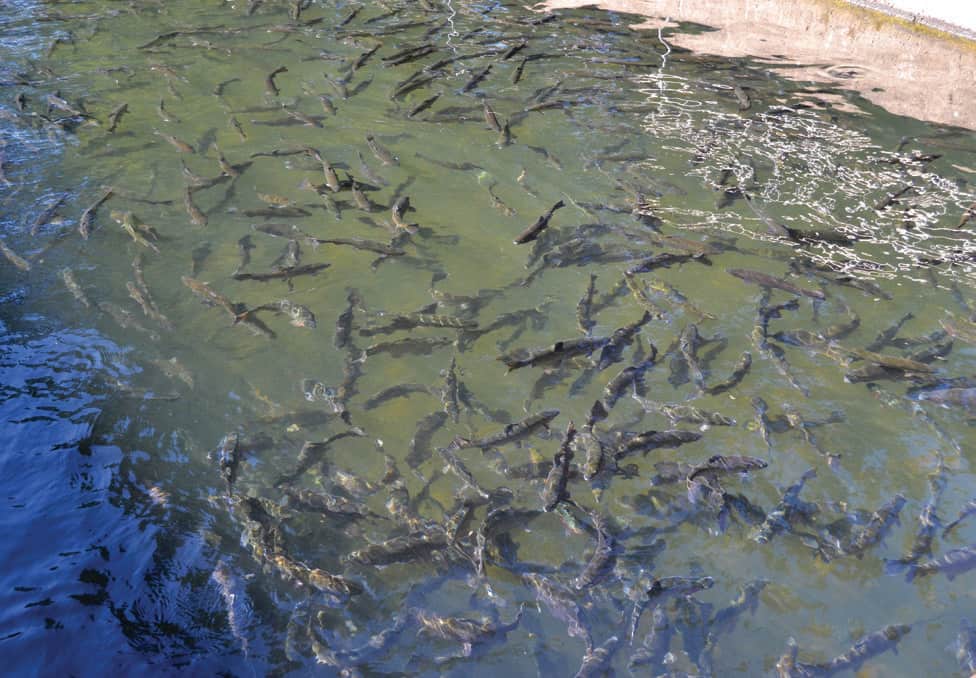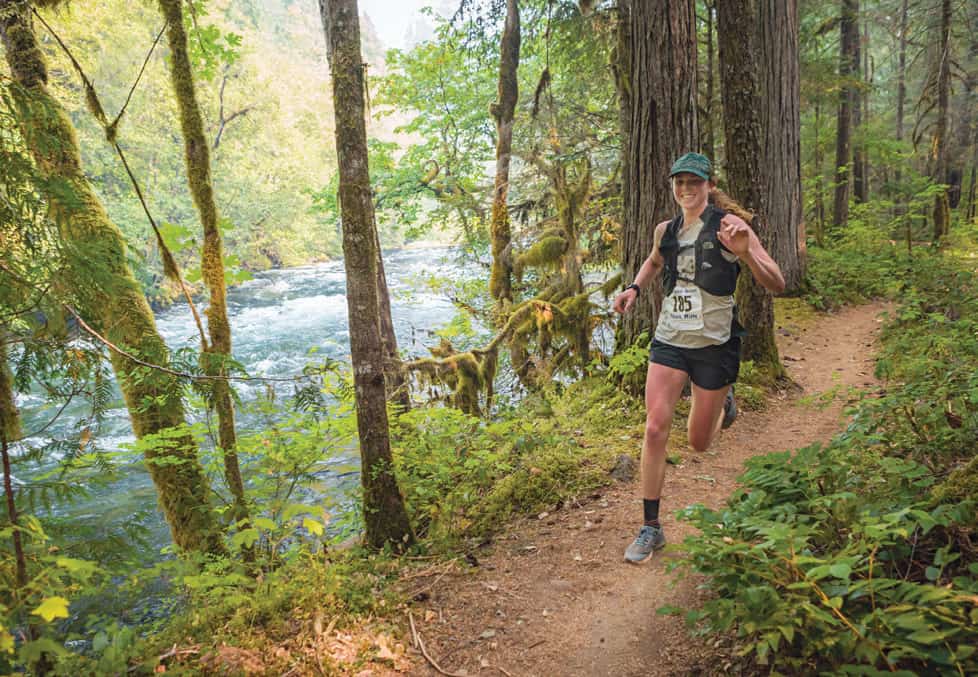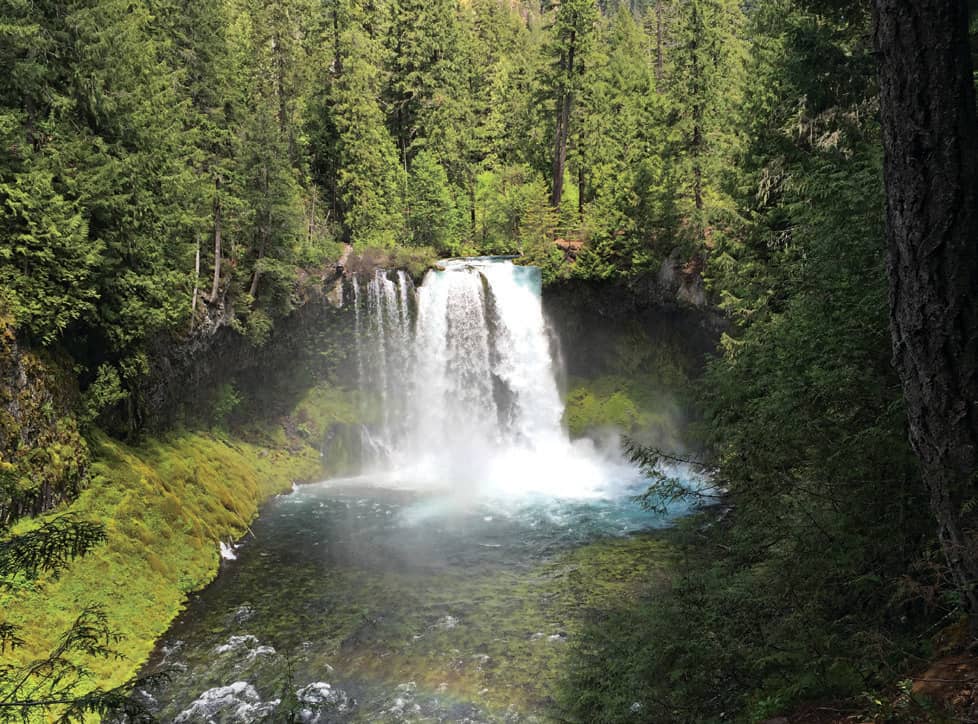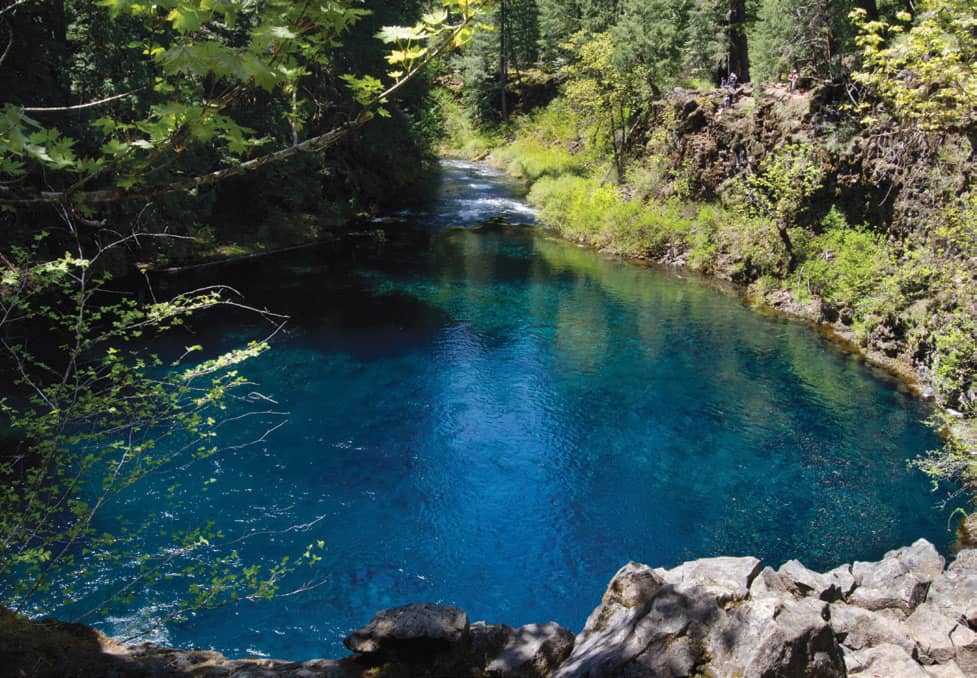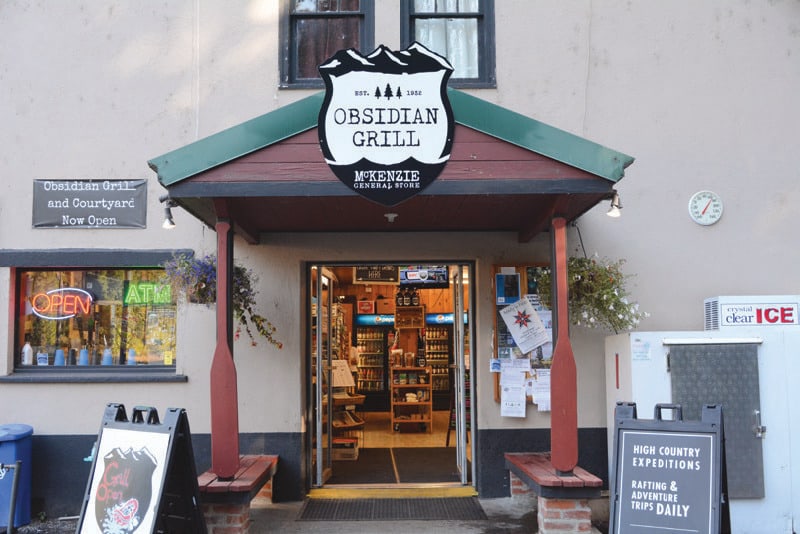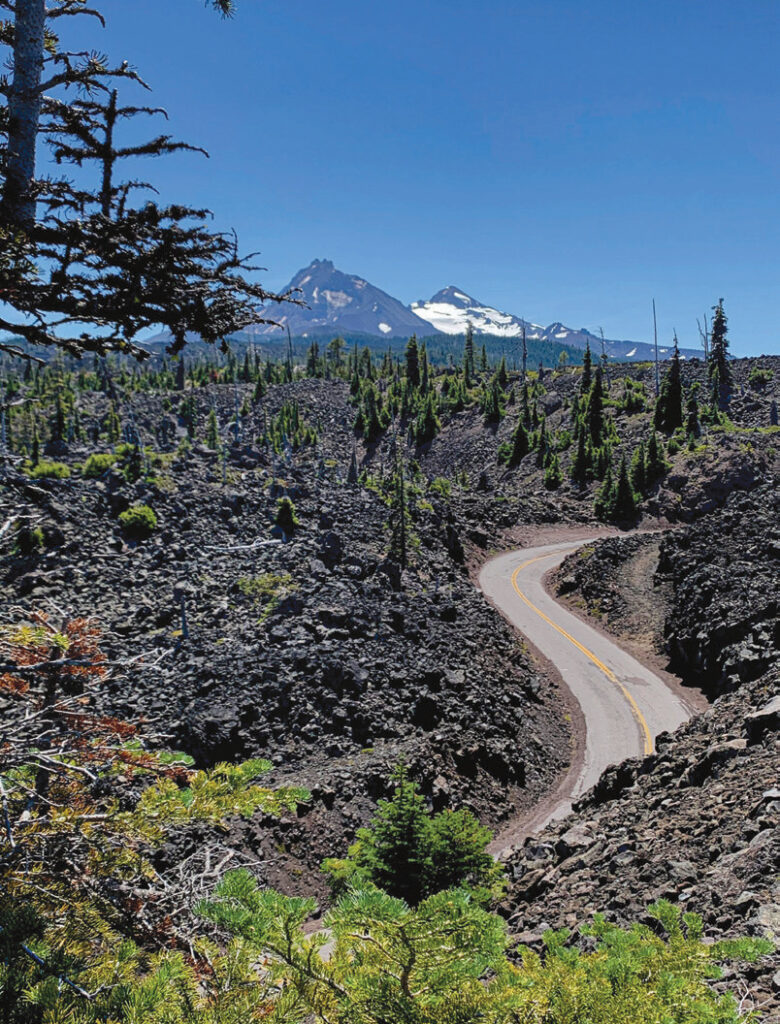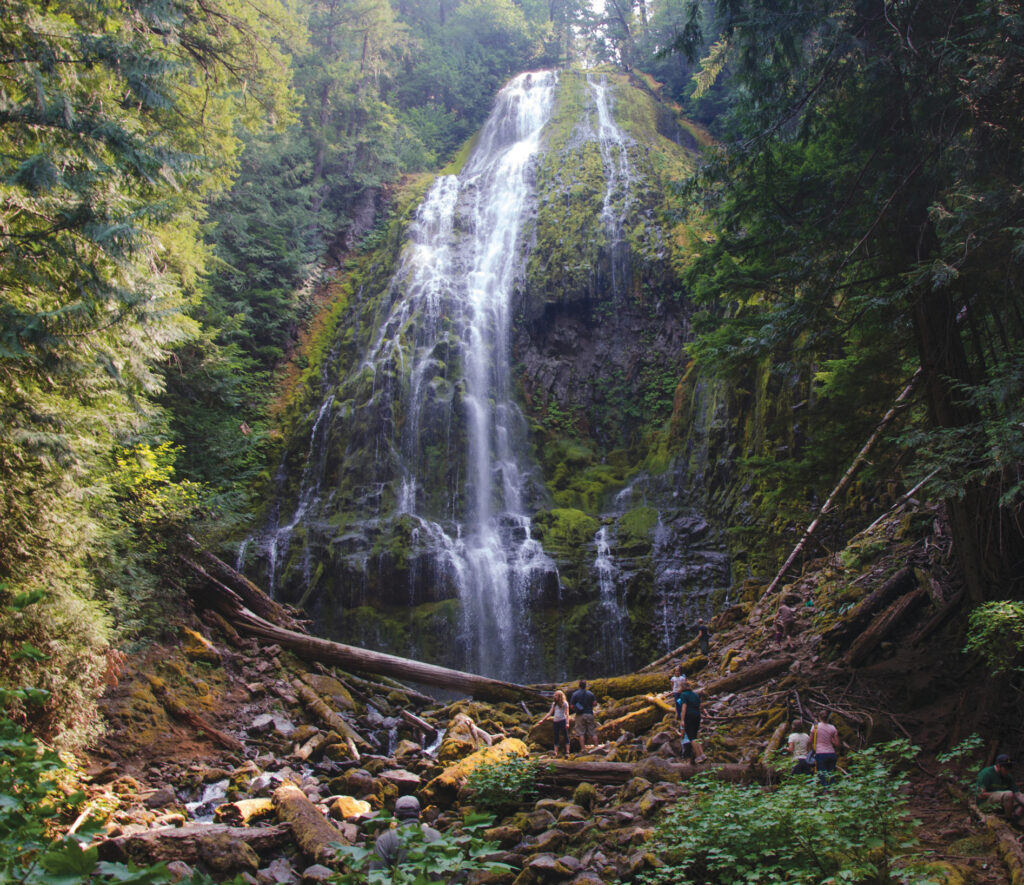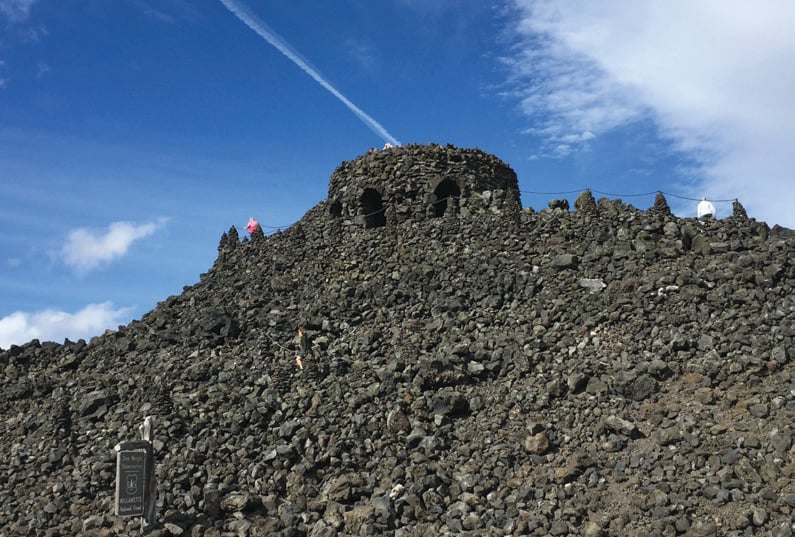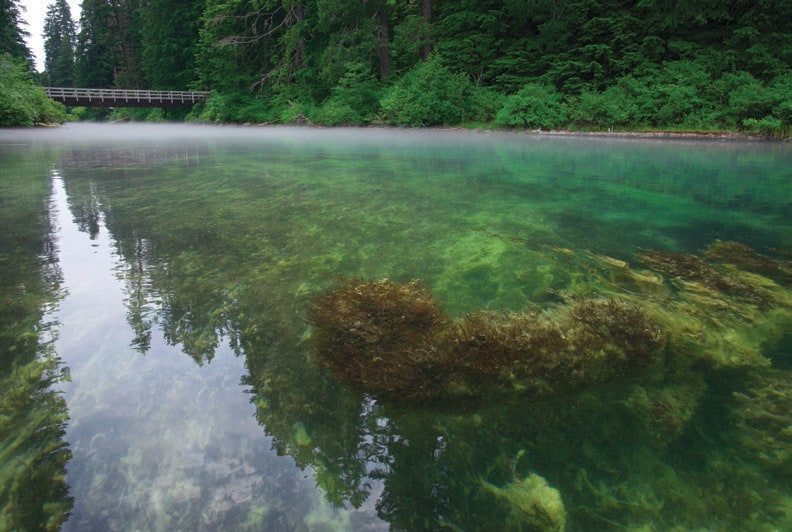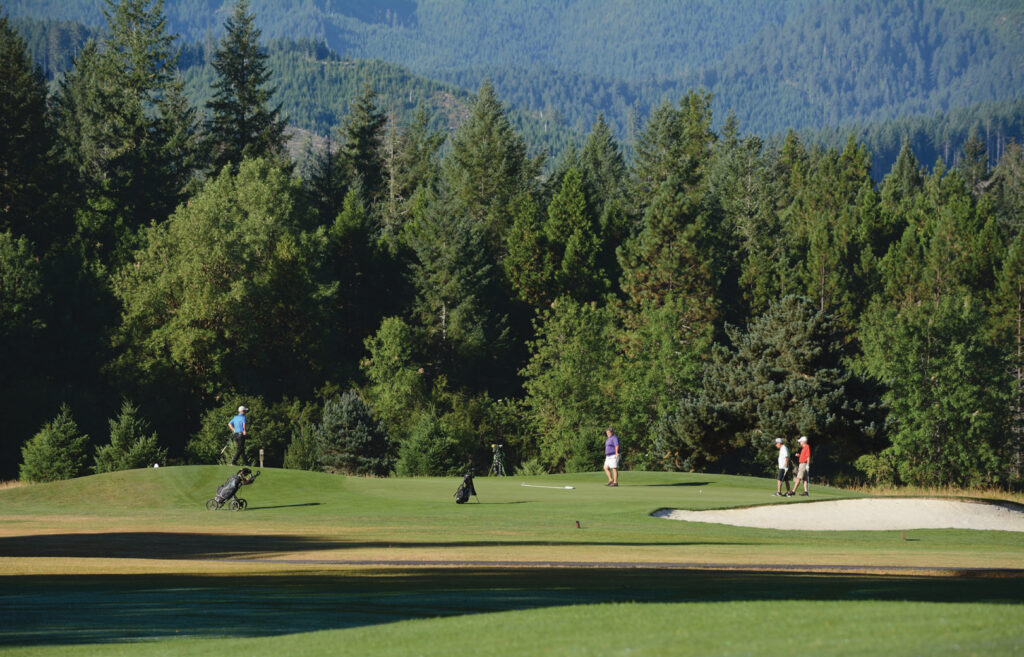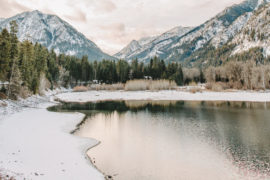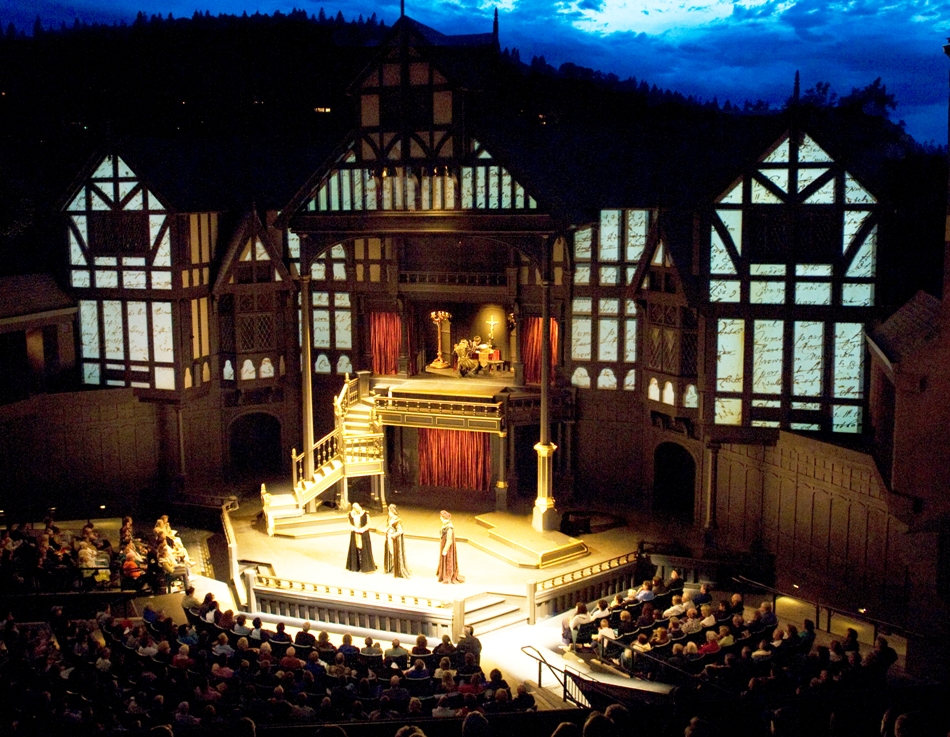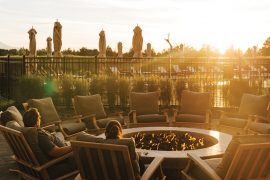Finding Blue Pool and other epiphanies in this wooded wonderland
written by James Sinks
In the McKenzie River Valley, it’s almost like Mother Nature saves the best for last.
From the start of the snowmelt, the picturesque pocket in the central Cascades—home to dramatic waterfalls, crystalline lakes, and moonscape lava fields—attracts flocks of visitors to bike, hike, fish, paddle, soak and exhale. President Herbert Hoover, a frequent vacationer and angler here, was likely referring to the McKenzie when he wrote of Oregon in his memoirs. “Within these woods,” he said, “are never-ending journeys of discovery.”
With so much to do and so much to see, you’d think it couldn’t possibly get more breathtaking.
Then autumn arrives.
As crowds thin, nature’s picture show begins. Like deciduous peacocks, hardwoods jockey to show off their best colors. Reds. Yellows. Oranges. In fall, you can still experience the expected and unexpected joys of the McKenzie, just against a more vivid backdrop and with more elbow room.
Frigid and clean, the McKenzie River tumbles and swirls westward some 90 miles from its birthplace at Clear Lake to its meetup with the Willamette River. Along the way, it glides through deep fishing holes, over rollicking rapids, underneath covered bridges, and through a succession of cozy river towns, including Leaburg, Rainbow and McKenzie Bridge.
One of those communities, Blue River, is in the midst of a major rebuild. Much of the town was in the path of the calamitous Holiday Farm Fire of 2020, which devoured nearly 174,000 acres and hundreds of structures.
Wildfire scars are increasingly common along Highway 126, the thoroughfare in the valley. Yet while charred areas may be jarring for those who remember the McKenzie for its seemingly endless forest canopy, change is also rebirth.
“The burnt out hollow of a massive Douglas fir set in stark contrast to an azure blue sky is its own kind of juxtaposed artistry,” said Jonnie Helfrich of guide service A. Helfrich Outfitters, and part of a famous family clan that began plying the McKenzie a century ago. “The river itself is unchanged. The great fishing spots are there. The rapids are exhilarating. The calm pools are relaxing. When our guests look for the beauty around them, they see it.”
Day 1
COMFORT FOOD • HIKING + BIKING • WATERFALLS
When packing for a McKenzie escape, don’t forget the obvious. Hiking boots. Kayaks. Bicycles. Golf clubs. The kids, if you have them and have room. Also, download or print trail maps because cell service will be spotty. Less obvious but also important: quarters.
Just across one-lane Leaburg Dam, the Leaburg Fish Hatchery rears millions of rainbow trout, steelhead and Chinook salmon annually. But the biggest attractions are large white sturgeon, who hang out in a show pool, next to a repurposed gumball machine that will exchange fish food for those quarters.
Just up Highway 126, comfort food is king at the circa-1951 Vida Cafe. Stop for a breakfast (or lunch) of frisbee-sized pancakes or, if you’re not the driver and can nap, spend some quality time with a more-than-half-pound McKenzie Monster cheeseburger.
Before settlers arrived on the Oregon Trail, the McKenzie River Valley attracted indigenous people to find obsidian, hunt, fish, and collect hazelnuts and berries. Some of the landscape retains Native names, but the river itself was named after a Scottish Canadian fur trader and explorer, Donald McKenzie.
If the river is the valley’s star attraction, the co-star is the McKenzie River National Recreation Trail, known by locals as MRT. The 26-mile pathway starts at the river headwaters and mostly parallels the river to the U.S. Forest Service McKenzie River Ranger Station, just east of the hamlet of McKenzie Bridge.
For mountain bikers, the scenic downhill trail is among the country’s best. Two-wheel adventuring types can catch a Horse Creek Lodge shuttle to one of several access points, depending on skill level and time availability. Rentals are also available. Pedaling the entire length will take four to five hours, depending on fire closures and endurance.
Exploring instead on two legs? Beeline to the 2.6-mile waterfall loop, where 100-foot-high Sahalie and 70-foot-high Koosah falls are practically neighbors. Nearby, a moderate and sometimes crowded 4.2-mile hike will take you to the alder and evergreen-ringed Tamolitch Pool, one of the state’s watery wonders. It’s also known as Blue Pool because of its ice blue color.
Happily, there’s also warmer water nearby.
After pizza at Takoda’s in Rainbow, soak your tired legs at Belknap Hot Springs, once used by indigenous people for religious and healing ceremonies. Today, river water is heated to 102 degrees and pumped into two large outdoor soaking pools. Resort guests dunk for free, and visitors can buy hourly passes for $8.
If there’s still daylight, head across the resort footbridge and explore the sprawling grounds. As if the McKenzie isn’t magical enough, you may stumble into a landscaped secret garden with pillars, fountains and probably fairies, and decide to stay forever.
Day 2
MCKENZIE RIVER • SCENIC ROUTE • LAVA FIELDS
A McKenzie visit isn’t complete unless you actually get onto the McKenzie. Fortunately, there are lots of ways to do it, and plenty of people to help you, no matter which option—you know—floats your boat.
Almost a century ago, there was just one method to ride the river: wooden drift boats, designed to nimbly navigate swift water. McKenzie dories, as they’re known, are celebrated with a festival in the spring.
Among the early guides in the early twentieth century was Prince Helfrich, who was boating the river as a teenager and became a living legend on not just the McKenzie, but for running previously inaccessible waterways across the West. Shortly after he died in 1971, a boat landing near Vida was named after him. Today, his descendants are among dozens of fishing and rafting outfitters that will take you on half-day or daylong trips. Dress warmly.
The McKenzie General Store is less store and more restaurant these days, and your picnicking palate will be pleased with organic fare including burgers, wings and burritos. Order food for the road. There’s daylight burning.
Open to traffic between mid-June and November, the Old McKenzie Highway connects McKenzie Bridge and the Central Oregon town of Sisters. The meandering roadway, which follows a former wagon road, is a popular scenic bike route, so drive carefully.
En route to the summit, stop at Upper and Lower Proxy Falls, located in the Three Sisters Wilderness Area. Accessed via a 1.6 mile loop trail, Lower Proxy Falls plunges 226 feet over a basalt face and at the base, the spray will also get your face (and hair) wet. A federal annual or day pass ($5) is required.
Eruptions from Belknap Crater, the most recent 1,500 years ago, blanketed 65 square miles in the upper Cascades with a surreal lava field. The place is so otherworldly that it once served as a NASA training ground for moon-bound astronauts. At the top, in the midst of that ocean of black rock—and built from it—is the Dee Wright Observatory, a castle-evoking lookout assembled by a crew from the Depression-era Civilian Conservation Corps. It’s named after the project’s construction foreman, who died before it was completed.
Inside, you can peek through rocky peepholes at a panorama of peaks, including Mt. Washington, the Three Sisters, Black Butte and Mt Hood on clear days. From the observation deck atop, snuggle into jackets to watch the sun set, as it splashes the mountains in waning golden light.
Day 3
CLEAR LAKE • GOLF • SMOKED BRISKET
The McKenzie begins its journey at Clear Lake, which needs to be seen to be believed.
Order breakfast from the rustic cafe and slip a canoe or kayaks into the water, or take a brisk morning hike amid the blushing maples on the 5-mile trail circling the lake. If you have a fishing pole handy, the place is home to both native fish and stocked rainbow trout.
Formed by a lava dam about 3,000 years ago, the lake is fed via porous aquifers, where chilly water percolates out after decades underground. Only non-motorized watercraft are allowed in order to protect the lake’s renowned clarity, which makes it seem at times like boats are floating in air. You can see a submerged stand of upright trees 100 feet under the surface, remarkably preserved for thousands of years thanks to year-round water temperatures that hover near 40 degrees.
If icy water makes you think of your ice-cold golf skills and maybe chilled beverages, you’re in luck. It’s a short drive to Tokatee, where you can drive a golf ball at one of the state’s highest rated, and beautiful, public courses. The fire missed the tree-ringed place by a half mile. Call ahead for tee times.
Even if you aren’t the golfing sort, the view of the Three Sisters is stunning, there are chairs by the non-used fire pit, and the drinks are robust: You’re only allowed two Toka-teas.
For your final stop, McKenzie Station Pub and Espresso is like a garage sale met a restaurant and they had a baby. The twenty-hour-smoked brisket is impressive, and there’s plenty to browse while you wait. Make reservations, however. It can be tough to get a table, especially on Sunday nights. That’s when locals pour in for the weekly bingo game, and the air fills with happy repartee and colorful stories that are matched only by nature’s show outside.

MCKENZIE RIVER VALLEY, OREGON
EAT
Clear Lake Resort
www.linnparks.com/parks/clear-lake-resort
McKenzie General Store/ Obsidian Grill
www.mckenziegeneral.com
McKenzie Station Pub and Espresso
www.mckenziestationpub.wixsite.com
Takoda’s Rainbow
www.takodasrainbow.com
Vida Café
www.facebook.com/TheVidaCafe
STAY
Belknap Hot Springs Resort
www.belknaphotsprings.com
Inn at the Bridge
www.mckenzie-river-cabins.com
Loloma Lodge & Cabins
www.lolomalodge.com
McKenzie Riverside Cottages
www.mckenzieriverside cottages.com
PLAY
A Helfrich Outfitters
www.helfrich.com
Dee Wright Observatory
www.fs.usda.gov
Horse Creek Lodge
www.horse-creek.com
Proxy Falls
www.fs.usda.gov
Tokatee Golf Course
www.tokatee.com


